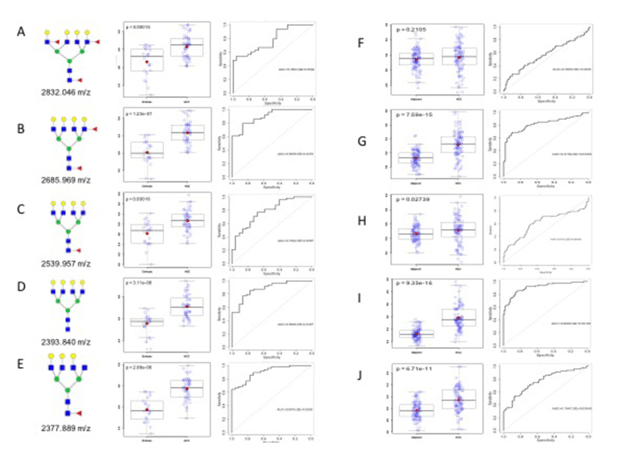Core Fucosylated N-Glycan Analysis in FFPE Tissues
While increased levels of fucosylation have been previously seen in hepatocellular carcinoma, one major drawback of MALDI Imaging is the inability to differentiate core-fucosylated glycans from outer-arm fucosylated glycans. This issue is alleviated through by using Endo F3 PRIME-LY™ due to its specificity for core-fucosylated structures. Pairing Endo F3 PRIME-LY™ with traditional PNGase F PRIME-LY™ imaging allows for the differentiation between core-fucosylated and outer-arm fucosylated glycan structures, allowing for the further classification of fucosylated glycans upregulated in cancer specific regions and giving a more definitive and specific alteration patter to disease states.
Image from West, C. et. al. J. Proteome Res. 2018
Serum/Plasma N-Glycan Profiling of Fucose Isomers
Application of both PNGase F PRIME-LY™ and Endo F3 PRIME-LY™ for N-glycan release were utilized in a recently developed method for N-glycan profiling of whole serum and plasma. Using this method, over 75 N-glycan species can be detected from one microliter of serum in less than 6.5 hours, demonstrating the potential applications of this method in clinical diagnostics. The ability to utilize both PNGase F PRIME-LY™ and Endo F3 PRIME-LY™ in this method represents the feasibility of differentiating fucose isomers within this method.

